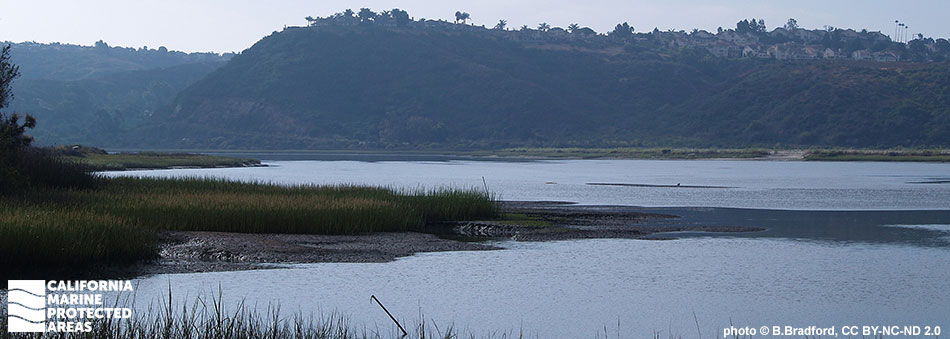
Overview
Batiquitos Lagoon State Marine Conservation Area (SMCA) (No-Take) is a marine protected area (MPA) in northern San Diego County that protects around a half-square-mile of a large estuary system in the heart of developed coastal Southern California. Located in south Carlsbad, just north of Encinitas, Batiquitos Lagoon SMCA (No-Take) protects an environmentally important estuary with marsh, mudflats, and eelgrass habitat. Native American historical sites surround the coastal lagoon, as well.
The restored estuary is home to dozens of species of fish including turbot, croakers, bass, and sardines, some of which use the estuary as a breeding ground. It also acts as a stopover for migratory birds and supports a rich community of invertebrates, sharks, rays, birds, and plants including many that are endangered. Batiquitos Lagoon SMCA (No-Take) offers excellent hiking and birdwatching with an easy-access trail system.
Regulations
It is unlawful to injure, damage, take, or possess any living, geological, or cultural marine resource. Take incidental to certain permitted activities may be allowed. Other restrictions may apply. See CCR T14 §632(b) for details.
California Code of Regulations Title 14, Section 632(b)(137)(opens in new tab)
Quick Facts
MPA size: 0.51 square miles
Habitat composition*:
- Rock: 0.47 square miles
- Sand/mud: 0.16 square miles
- Coastal marsh: 1.60 square miles
*Habitat calculations are based on three-dimensional area and may exceed the total MPA area listed above.